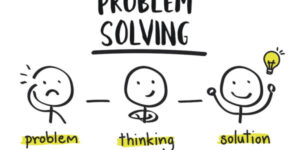The Double-Edged Sword of Working From Home (WFH):
Humans need “Human Connection”:
Sounds obvious I know, but Employees, and more worrying Employers, appear to underestimate its importance. Actually, I may be unfair here. I think we all know the importance, but I do think we confuse “communication” with “connection”. With the emergence of “Working From Home” (WFH), and the move by Employers to facilitate this “new normal”, I’ve noticed a big impact on workplace relations.
Aided by IT & Communications Systems, the ability to “stay in the loop” has become possible for most businesses. Previously the cost would have been prohibitive, but now with Microsoft Teams, Zoom, Google Workplace, and the like, we are all able to afford the infrastructure to enable virtual workplaces. But have you noticed how remaining in communication with each other somehow just doesn’t feel the same? What’s happening? Or a better question is ….. What’s Different?
Communication Vs Connection:
Firstly, let’s distinguish between these two. Communication is, plainly and simply, relaying information. The imparting or relaying of information through speaking, writing, or using some other medium. Connection on the other hand requires a relationship. It’s communication at the higher human level. Human Connection is a deep bond that’s formed between people when they feel seen & valued. Are you spotting the difference? People exchange positive energy and build trust. They feel heard & understood and have a sense of belonging. Now reflect on your workplace. While you may be doing a good job at “Communicating”, does the “Connection” piece need some work?
Symptoms of a Lack of Connection:
So what does it look like when a business begins to lose its sense of connection through WFH? Despite all of the wonderful IT aids that are available and the numerous ways to communicate, you may notice information and messages are misinterpreted, or that the priorities and urgency are misunderstood. Frustrations can surface between colleagues and initial instructions can need further clarifying. Every conversation has a business objective or purpose. The chit-chat and banter are missing. “Connection” and its role in the workplace can be seriously underestimated. But its impact can be great and undeniable.
The Effects of a Lack of Connection:
The most obvious effect is the loss of a sense of belonging. We no longer feel purposeful or that we are enjoying work like we previously did. That feeling of belonging is replaced with a sense of duty. Our work loses its vibrant social and community appeal. It is replaced with that “means to an end” feeling. Where once work was a place where we enjoyed the company of others, it has now become a place where tasks are executed and colleagues are looking for work updates. The enjoyment is ebbing away, yet we can’t quite put our finger on “why”. The work is pretty much the same. The communication methods may have changed, yet we are still getting the required info to process. But the “Human Connection” has been lost.
Focus on Cultivating Connection:
While people will often notice the symptoms and effects of a lack of connection, knowing how to go about cultivating it, can sometimes prove elusive. It requires “Awareness” & “Intentional Action” to build human connection in a WFH environment.
It’s “Awareness” that brings us back to an earlier question, “what’s different”? It’s often as simple as personal conversations. Those chats that previously bridged the working conversations when we were all in the office. Remember the weekend catch-ups on a Monday, the watercooler chats about your forthcoming holiday plans, or the sitcom reviews. These all helped us connect. They allowed for a better understanding of each other as humans. And this understanding better informed our interactions.
To address it requires “Intentional Action”. Unlike the way WFH can insidiously dismantle our sense of belonging and connection, keeping it alive or building it up, requires a conscious effort. Discussion around the importance of Connection helps create awareness and an understanding of what that looks like will encourage us to spend time cultivating it. Management can do this by organising social events and encouraging acts of kindness. We need to explain our concerns about staying personally connected, and the possible consequences when we don’t. “Intentional Action” is simply how we plan to address the reduced opportunities to connect beyond the job. Here are some ideas ……
- Encourage peer to peer thank you notes (and maybe cc their direct report).
- Treat a colleague to lunch (delivery if needs must).
- Celebrate personal success beyond work.
- Coffee meetings with no agenda (virtual?).
- Invite colleagues for a random public “Appreciation” of a star performer.
- Hold a “Soap” or “Big Match” elevenses review to discuss the latest happenings.
- Invite a performer to entertain your staff or attend a local performance.
- Encourage 1:1 check-ins.
- Mark birthdays, anniversaries, or special occasions in some collective way
- Hire a Yogi to do a morning yoga session for employees, who opt in for a bit of fun.
- Have a nutritionist do a talk. etc. etc. etc.
Conclusion: Focus on Connection.
“Connection” is the pixie dust of communication. It’s the magic that makes us feel like a valued team members and not just a body who executes tasks. Task Executors are easily replaced, whereas team members become a vital part of our ecosystem. Which place would you like to work? Who would make the better employee?




